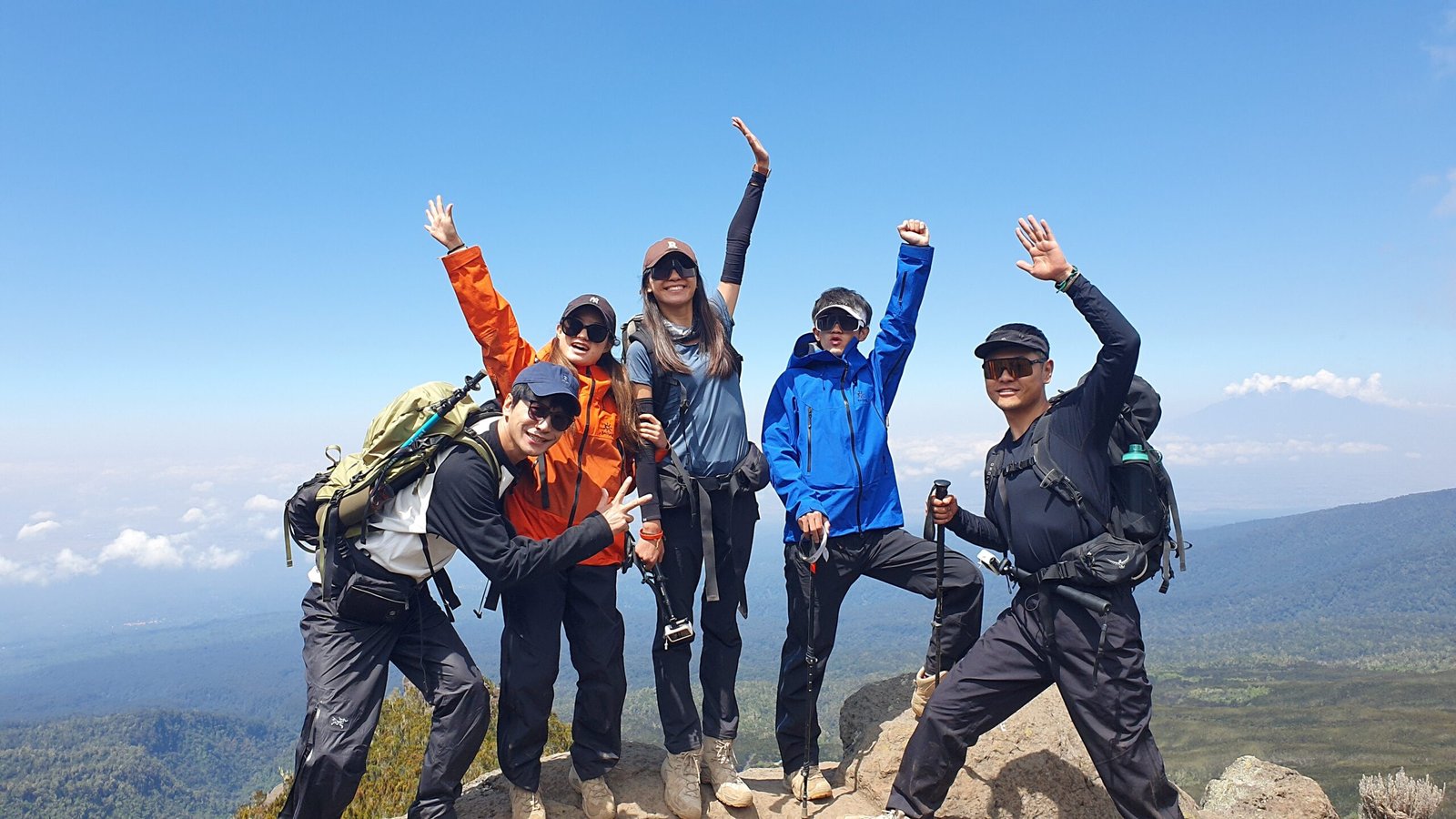Mount Kilimanjaro offers several routes to reach the summit, each varying in difficulty, scenery, and success rates:

Machame Route: The most popular and scenic route, known as the “Whiskey Route.” It’s ideal for trekkers with some hiking experience and is best done in 7 days for acclimatization
Lemosho Route: Recommended for beginners, this longer route is scenic and offers excellent acclimatization opportunities. It’s quieter and less crowded, perfect for a more serene experience
Northern Circuit: The longest route (9–10 days) and ideal for those who want the highest success rate and fewer crowds. This trail circles the mountain for unique perspectives
Marangu Route: Known as the “Coca-Cola Route,” it’s the only route with hut accommodations but has a lower success rate due to its fast ascent
Rongai Route: The only northern approach, offering a less crowded, dry, and gradual climb, making it easier but with fewer scenic variations
2. Best Time to Climb
For the most favorable weather:
January to mid-March: Cooler weather with fewer crowds. Ideal for those looking for a quieter trek.
June to October: Peak season with dry and stable weather. Expect more trekkers but also better climbing conditions
3. Cost Breakdown
Climbing Kilimanjaro is an investment, and costs depend on several factors:
Permits: Park fees include $70 per day for conservation and $50 per night for camping. Total costs for a 7-day trek can exceed 0 in park fees alone
Trek Packages: The full package (including guides, porters, meals, and accommodations) ranges from ,000 to ,000 depending on the route, operator, and group size
4. Physical Preparation
Climbing Kilimanjaro is a non-technical hike but requires good physical fitness:
Endurance Training: Prepare by hiking regularly, including uphill treks. Incorporate strength training for your legs and core
Altitude Acclimatization: Choose longer routes to allow your body to adjust to the altitude. This can significantly increase your chances of reaching the summit without experiencing severe altitude sickness
5. Health and Safety
Altitude Sickness: Climbing Kilimanjaro involves reaching heights over 5,800 meters (19,341 feet). Symptoms of Acute Mountain Sickness (AMS) can appear at these altitudes, so gradual ascent is crucial. Pay attention to any symptoms and descend if necessary
Vaccinations: Ensure you have necessary vaccinations, such as yellow fever, and take precautions against malaria in lower elevations
6. New Regulations and Sustainability
The Tanzanian government continues to implement stricter sustainability practices to preserve Kilimanjaro’s ecosystem. This includes tighter regulations on waste management and restrictions on the number of daily climbers
7. Packing Essentials
Clothing: Layered clothing is essential as temperatures fluctuate from warm at the base to freezing near the summit. Be sure to pack moisture-wicking base layers, insulating mid-layers, and waterproof outer layers
Gear: A high-quality sleeping bag (rated for extreme cold), trekking poles, and comfortable boots are critical. Don’t forget headlamps for summit night and ample water storage

